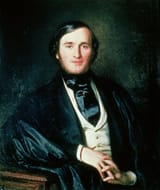Search Results
6/10/2025, 4:58:01 PM
>>17751646
yes
Egypt
>There may also have been some distinction of type in the royal families, for the rulers often have that extremely dolichocephalic head form, coupled with a sloping forehead and high nasal aquilinity, with highly excavated nostrils, seen so typically in the familiar mummy of Rameses III, as in the living emperor of Ethiopia, Hailie Selassie. (C. Coon, Races of Europe)
Persia
>‘Because Cyrus was hooked-nosed, the Persians - even to this day - love hooked nosed men and consider them the most handsome’ (Plutarch, Moralia 281e)
Greece
>One, because his nose is tip-tilted, you will praise as piquant, the beak of another you pronounce right-royal, the intermediate type you say strikes the harmonious mean. (Plato, Republic)
>...but those who have an aquiline nose with a marked separation from the forehead are magnanimous. (Aristotle)
Rome
>most patricians/early emperors had aquiline nose, so it's also called roman nose
>He had also a noble dignity of form; and a shapely beard, a broad forehead, and an aquiline nose were thought to show the virile qualities peculiar to the portraits and statues of Hercules. (Plutarch on Mark Antony)
Germanics
>His head is round, with curled hair retreating somewhat from brow to crown... The eyebrows are bushy and arched... The nose is finely aquiline. (Sidonius Apollinaris on Theodoric the Gothic king)
Modern Europe
>many French and Germanic kings and Habsburgs were aquiline-nosed
>"In Victorian England too, where the nose was considered ‘the strongest, highest, and most perfect expression of character, even in the face of a beast’, the Roman (or ‘aquiline’) nose was considered the most desirable type, a sign of great powers of decision, energy and firmness."
Today
>Jews rule the world, aquiline nose is their main sign
yes
Egypt
>There may also have been some distinction of type in the royal families, for the rulers often have that extremely dolichocephalic head form, coupled with a sloping forehead and high nasal aquilinity, with highly excavated nostrils, seen so typically in the familiar mummy of Rameses III, as in the living emperor of Ethiopia, Hailie Selassie. (C. Coon, Races of Europe)
Persia
>‘Because Cyrus was hooked-nosed, the Persians - even to this day - love hooked nosed men and consider them the most handsome’ (Plutarch, Moralia 281e)
Greece
>One, because his nose is tip-tilted, you will praise as piquant, the beak of another you pronounce right-royal, the intermediate type you say strikes the harmonious mean. (Plato, Republic)
>...but those who have an aquiline nose with a marked separation from the forehead are magnanimous. (Aristotle)
Rome
>most patricians/early emperors had aquiline nose, so it's also called roman nose
>He had also a noble dignity of form; and a shapely beard, a broad forehead, and an aquiline nose were thought to show the virile qualities peculiar to the portraits and statues of Hercules. (Plutarch on Mark Antony)
Germanics
>His head is round, with curled hair retreating somewhat from brow to crown... The eyebrows are bushy and arched... The nose is finely aquiline. (Sidonius Apollinaris on Theodoric the Gothic king)
Modern Europe
>many French and Germanic kings and Habsburgs were aquiline-nosed
>"In Victorian England too, where the nose was considered ‘the strongest, highest, and most perfect expression of character, even in the face of a beast’, the Roman (or ‘aquiline’) nose was considered the most desirable type, a sign of great powers of decision, energy and firmness."
Today
>Jews rule the world, aquiline nose is their main sign
Page 1
